“My life on the farm during the Great Depression more nearly resembled farm life fully two thousand years ago than farm life today.” – Jimmy Carter
We know that social change occurs glacially, and that the victories discussed in textbooks represent rallying-points rather than real social conversions. American schools were “desegregated” in 1955, and yet remain overwhelmingly divided by race fifty-four years later, at the time of this essay. Fifty-four years is hardly any time at all in race matters.
The North, after the military surrender of the South in the Civil War, attempted with its Reconstruction to speed this glacial pace, bringing blacks to Congress, integrating institutions, and so forth. The social resistance was so great that military fomenting of this social transformation was abandoned (in 1877) and events resumed their glacial pace – once most of the Reconstruction-era changes were undone.
Consequently, one would imagine that differences between the South in 1890 and 1850 would be merely gradations, and between the South in 1920 and 1890 mere gradations again. Terms like ante bellum – which presuppose a huge demarcating line and a real difference post and ante – are unlikely to hold a great deal of truth.
An example of this is the boyhood home of James Earl Carter, America’s thirty-ninth president. Carter, in many respects, appears to be the first president of the era we now live in – he was the first to be born in a hospital (in 1924, fifty-four years after Georgia was readmitted to the Union), the first to turn his church membership into real political capital, and the first to wish to be evaluated by his handling of America’s client states. He was also the first president to engage Middle Eastern politics outside of a Cold War frame of reference. But it is easy to mistake his upbringing in rural Georgia for something resembling a modern rural or suburban childhood. To a modern, Carter’s childhood strongly resembled the antebellum South.
The appearance of the Carter home helps create the impression of modern middle-class life. The
house is an elongated, single-story, three-bedroom home built from catalog plans. It would have fit into any Southern City – even its elongated layout appears to suggest the exigencies of an urban location, though the house stands very much alone. It has no basement and stands on brick piers, the cheapest kind of foundation for a house; and its layout is of the absolute simplest, one long central hallway (about five feet across) with living room, dining room, and kitchen on the left and three bedrooms on the right. There are no beauties, no architectural detailing, no staircases, and no ingenuity. All the windows appear to be the same size. This was a cheap, mass-produced house, a precursor of the age of the two by four. Its plans (and perhaps some of its materials; I am not certain) were purchased from Sears and Roebuck.
However, it is also a sturdy and respectable six room structure, with oak floors and moldings. Indoor plumbing was added later, in the kitchen and the single bathroom. The bathroom is home to the home’s homeliest detail, a shower pipe which drops water into a milkpail with a perforated bottom, which served as the Carter shower head. (This might count as ingenuity, although it is hard to imagine why a milkpail was cheaper than a showerhead. Perhaps the pail already had a hole in it.) The area was electrified in 1938. Carter grew up with kerosene lamps for light.
The house was solitary because it was a farmhouse. The house stands at the edge of a lovely pecan grove, the trees arranged in the customary rank and file. Behind the pecan orchard began the peanut fields, which were the primary cash crop of the farm. If you walk through the fields, you can circle back to the house via the barns, the stable, the vegetable garden, the chicken coop, and the tennis court.
If the reader mentally returned in surprise to those words – tennis court – then he did precisely what I did as I strolled by. “Tennis court?” I said to myself, snapping out of my blank tourist reverie. “I have never, ever, in my life seen a middle-class American farm with a tennis court on it.” And yes, it was old – Carter had played on it as a boy (so it was not added by later owners in 1984). And yes, Georgia has an ample supply of clay (it was a clay court), and so it is easier to build a tennis court here than in Vermont. But still, the feature was unusual, especially given the class connotations that tennis (still) has in American society. And given the hardscrabble son-of-a-peanut-farmer image Carter has worked to create (his autobiography of farm life was called “an hour before daylight,” celebrating his own hard work getting up before dawn).
I turned around and doubled back towards some of the farm buildings I had neglected to look at on my stroll through. A barn is a barn, I had thought, and a shed is a shed. But an inspection of the shed disclosed that it was a blacksmith’s shop – a more impressive place than I would have imagined here. Similarly the barns contained stupendous numbers of ploughs, wagons, and tools. The Carters also owned, onsite, their own peanut processing facility. This was a huge farming operation – much more than the Carter family could have managed. And the last shed by the road – that had a few too many windows on it to be a shed.
It turns out it was the home of a black family, the Carters’ skinner Jack Clark (responsible for the horses and mules) and his wife Rachel, who served as a nanny to the Carters’ children. They lived in a tiny one-bedroom shack with several children of their own. And here I realized what I was seeing. Jimmy Carter did not grow up on a farm, as we see it today, farmer, wife, kids, animals, and machines; he grew up on what we would call a plantation – farmer, wife, kids, animals, and negroes. The negroes were no longer owned – they had a degree of freedom they had not had sixty years before. But much of the economic and social reality had remained. If it was not a plantation, it was the ghost of a plantation. Beverly Gherman wrote a children’s book about Carter and describes the place in these straightforward terms:
Earl owned hundreds of acres of land on which he grew cotton and peanuts. He also owned a warehouse where he processed the crops. He employed black field hands to help him plant and harvest. The workers lived in small clapboard houses around the property…” (1)
The next phrase is lovely and needs to be given the emphasis of isolation: “and their children were Jimmy’s friends.” This is no doubt true, and it fits into the myth of Carter purity, but every adult can see the power relationships at work in this peculiar social institution.
This ghost of a plantation was known as the hamlet of Archery. Carter describes it as having twenty-five families; the Carters, twenty-three African-American families, and one other white family that lived at some distance (not visible from the Carter house). The Carters employed all the African-American families. What is more, as the nearest town – Plains – was three miles away and none of the Carter employees had cars, many of them shopped at the Carter “Commissary,” which was next to the tennis court. This particular variant of the “Company Store” may or may not have been typical, with employees in debt to their employer, huge mark-ups, and full-throttle exploitation of a geographical monopoly, but they certainly sold the usual goods like tobacco and whiskey. By the time of the young president’s manhood, the Carters were an affluent family in consequence of this type of peanut farming. Let me add here that I know nothing of the Carters’ cotton growing; this also has never been part of the Carter persona, perhaps because they stopped growing cotton early on, or perhaps because being known as a cotton planter has more complicated political implications which Carter wished to avoid.
There was not much incisive information available on-site about the roots of the Carter prosperity, but that plant grows best whose roots are in dirt is ancient wisdom. But for all I know, the Carters ran their commissary as a charity operation for the mere convenience of their employees and the purgation of the sins on their eternal souls before God. As a president, no doubt polemical biographies exist of Carter which demonize or canonize the family business, and no doubt a reliable biographer or two has found a few facts concerning the matter. And in general, there is much fertile ground here for research, much of which, for all I know, has already been done.
What is clear from the site is that the Carter home as a 20th-century plantation is not the focus of the preservation effort. The term “plantation,” a politically difficult word, of course is not used, and I felt, as I wandered around the place, that I was drawing conclusions a bit different from the ones the site was attempting to convey about Jimmy Carter’s hardscrabble childhood as a simple country boy with a loving-multicultural-harmony-flavor. But I could not ask any questions, because no one was there. The house was open, but there were no guards, no visitors, no one. Placards explained what I was seeing; some of them had buttons which played audio recordings of Jimmy Carter explaining things himself. I saw no one at the house for the entire duration of my visit.
When I left, a certain perverse desire for exploration prompted me to turn right, rather than left to go back
to the main road; I figured I’d find a way through. The road came to a sharp right turn and became dirt, so I figured I should turn back, when I realized that I had found the rest of Archery. I parked my pickup truck and got out.
At the turning of the road were about half a dozen old clapboard one- or two-room shacks, unpainted, unoccupied, and slowly decaying. Back behind me along on the paved part of the road was one which was recognizably the same style, but since expanded and upgraded, with painted exterior and a car in the driveway. It had looked so normal and modern that I had paid it no mind as I drove past. Next to it were two shacks decorated with “no trespassing” signs. For
the time being I heeded the warning and walked down to the shacks facing the dirt road.
To reach these I had to climb over a fence. The nearest shack was locked, and its windows so dirty I could barely see through them. It was leaning dangerously, and its porch was rotting away. As I neared it two pigeons flew out, which gave me quite a scare. It appeared to be completely filled with objects. All around on the ground was old detritus: glass bottles, tin cans, bits of machinery, cigarette butts. I walked over to a trailer which was parked nearby. It was covered in notices. They were certificates of occupancy, from 2000, 2001, 2002, and sure enough, all the way through 2008. To my eyes the place looked like no one had been there in two years (or cared for it in ten). I inspected a little one-horse stable, now badly rotted but still floored with hay. I continued past two mounds of loose bricks and concrete, an old oil tank, and a large mound of old ashes and fire-remains to look at what appeared to be hundreds of filing-cabinet drawers, in stacks which had been pushed over. They were not file drawers, though: they were hundreds upon hundreds of boxes of ammunition! They had apparently been made by the Army. They were in their boxes, but obviously had been exposed to the elements for some time; I have no idea if the ammunition was any good or not. I was staring at this find when I realized, quite suddenly, that I was in
precisely the kind of Southern place we Northerners are always told we’d better steer clear of.
Someone else arrived to give me the same news. It was a dog, coming from the occupied house. He was at quite a distance, and looked me over first, before he started barking. “Dammit this is not a good place to be,” I said, and I left the ammo, the ashes, the oil tank, the trailer, and the rotted out shack behind. I leaped over the fence, the dog barking like a devil but not approaching, and I headed on back to my truck. I decided to follow the dirt road, figuring it would get me somewhere eventually. I saw a few more shacks, all similarly abandoned and not looking very accessible, got through a wet spot on the road (by the grace of the God who made four-wheel-drive pickups), and soon hit the highway again.
Those shacks of the Carter’s tenant farmers (presuming that is what they are) could easily become part of the Carter National Historical Site; but the continuity of the plantation past in the life of a living president might not be the kind of thing we like to remember. And to be fair, Teddy Roosevelt’s family might have owned a block of slums in the Five Points (I am making this up), or the Bush family a share in a South African gold mine, but we can’t memorialize the whole social and economic pyramid of life which supported the lives of these prominent men. Still, while there I felt that the term “farmer” could be very casually applied to Carter without full knowledge of what farming meant in Georgia’s cotton and peanut belt in the 1920s.
I have appended to this essay the quotation from Carter about his life resembling farm life from two thousand years ago; indeed the resemblance to Roman life struck me. The Romans would have called this institution a villa: a farm consisting of a single dominant family, their household servants and their field hands (this tripartite social structure also helps explain the strong connection Carter had to the Clarks, who were skilled labor and in a different social category from the field hands). I remember being disappointed the first time I read Cato the Elder, who supposedly represented the pristine Roman virtue, to find that his farming manual was mostly about running a business and managing slaves. In an advanced society, the people of prominence are the ones who manage workers, not the ones who work. The famous line of Jefferson “those who labor in the Earth are the chosen people of God,” if it was meant to have any honesty in it at all, presumably referred to those managers and Catos – to men like himself – as opposed to their slaves.
Caesar said that he would rather be the first man in a remote and unknown tribe of savages than second man in Rome. The Roman villa provided a kind of training ground for this preeminence, as it placed the young heir in a position of authority over a considerable number of individuals even from a young age. And yet it also brought with it some of the mystical connection to nature, and knowledge of the foundations of human society drawing its sustenance from the skin of the Earth, which Jefferson and Carter both rhapsodize about.
And it can also produce that curious combination of pauperism and nobility which so suits the modern presidency, where experience in command is essential but privilege is not preferred. Carter’s house was not large, especially compared to the homes of other men he encountered in his political life; and he was from Archery, Georgia, a tiny place on the outskirts of Plains, Georgia, which could hardly even be called a town. (The only place I found in Plains that was open for lunch was a soda machine.)
Plains is a satellite of Americus, the nearest true town; Americus is an interesting American place and not Podunksville, but neither is it Times Square. It is a strange backdrop for a child who later spent four years as the world’s most powerful man. Carter exploited this “simple, rugged, down-home, honest outsider” image to the full in his political campaigns.
On the other hand, Carter was clearly the crown prince of Archery. His father was the owner of the land nearly as far as he could see and the boss of all but one of the families in the area. As a boy, his appearance, wealth, reputation, and education set him apart from all the other residents of his village. Those twenty-three African-American families probably contained more than a hundred people, all of whom probably treated him with great deference. He himself mentions that he ran the Commissary when his parents were otherwise occupied, which is a rich source of experience for a young person: deciding who could buy on credit and who could not, who could be sold liquor and who could not, what to do in case of theft, how to handle returns, shortages, and other customer dissatisfaction, and confronting other such small but significantly discretionary situations. Superiority over others is a school for judgement and command, and it is not all that surprising that a large number of our presidents lived as masters among slaves (Washington, Jefferson, Madison, Monroe, Jackson, W.H. Harrison, Tyler, Polk, Taylor, Grant, and even Wilson briefly) or spent time managing simple stores (Jackson, Johnson, Grant, Truman, Carter, Clinton). These two categories cover all the presidents ever to come from the old Slave States, excepting the Texans, who deserve their own category in this and every other way.
It would be interesting to learn more about the evolutionary successor to plantation life in the South, and how it continued to develop after Carter. Carter’s own accounts seem likely to be sentimentalized and politically crafted; but as a president, he undoubtedly has drawn the strong spotlight of investigation. A full investigation of racial roles on the farm would be fascinating. Carter continually mentions that the black children in the town were his friends; did they get to play tennis with him? Did they sometimes eat at the dinner table with him? Other typical plantation topics – like the sexual dynamics between the farmer’s son and the black girls of the village – I will presume we will never know for certain.
All these topics may be covered in the existing biographies, none of which I have read. I myself know nothing about Carter besides what a person growing up in the 1980s would hear in normal political discussion and what I could see at the site. I wish there had been an engaged, knowledgeable, and honest person at the site to discuss these things with. The Carter boyhood is now another research topic to add to my list.
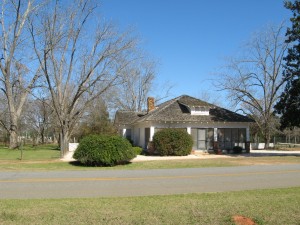
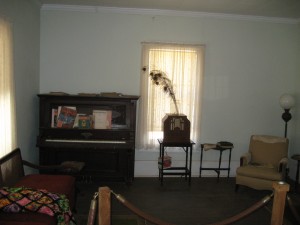
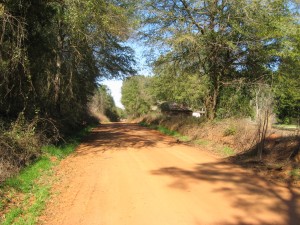
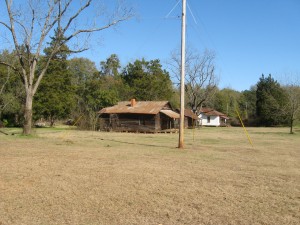
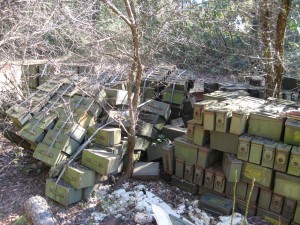
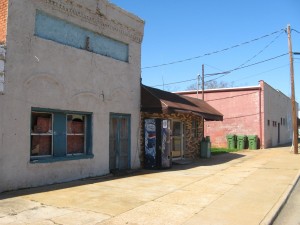
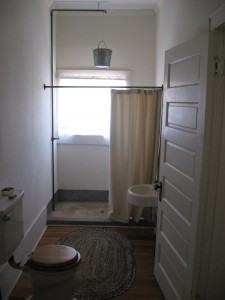
Post a Comment